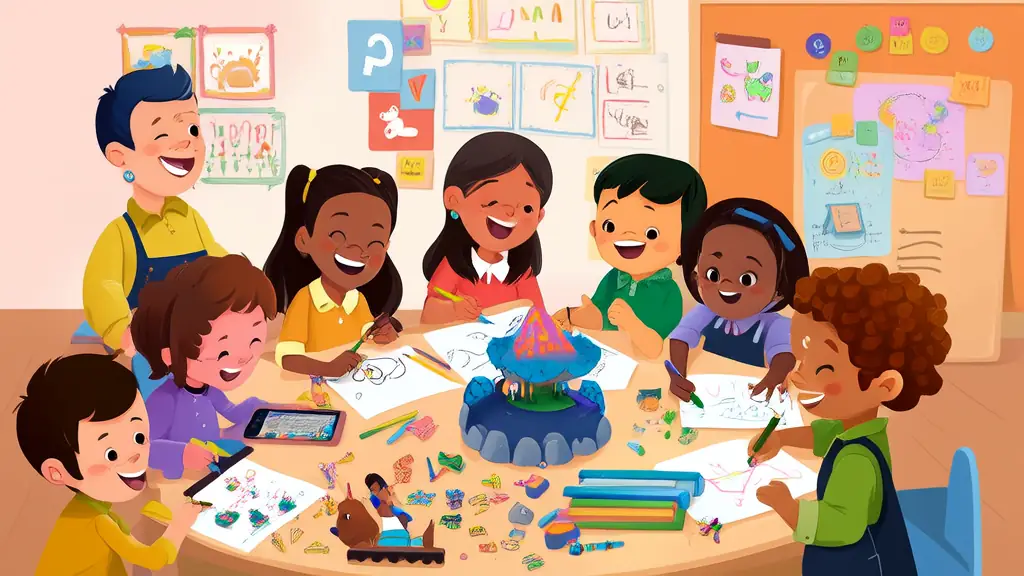
Empowering the Future: Navigating K12 Education in 2025
Welcome to the future of education, where innovation and insight are transforming the way we teach and learn. As we step into August 2025, it's an exciting time for parents and educators alike, as new methodologies, technologies, and research continue to shape the K12 landscape. In this blog post, we'll explore the latest trends, share valuable insights, and provide practical tips to help you support your child or student on their educational journey.
The Power of Modern Teaching Methodologies
Today’s classrooms are evolving, with a shift towards more student-centered and interactive learning experiences. One of the most effective methodologies is Project-Based Learning (PBL). PBL encourages students to engage in real-world problems, fostering critical thinking, collaboration, and creativity. For example, a middle school class might work together to design a sustainable community garden, applying concepts from science, math, and social studies in a meaningful way.
Another powerful approach is Flipped Classroom, where students watch video lectures at home and use class time for hands-on activities and discussions. This method has been shown to improve comprehension and retention, as students can pause, rewind, and review content at their own pace.
Child Development Insights and Research
Understanding child development is crucial for both parents and educators. Recent research highlights the importance of executive function skills, such as self-control, working memory, and cognitive flexibility. These skills are essential for academic success and can be developed through structured play, mindfulness exercises, and goal-setting activities.
Additionally, social-emotional learning (SEL) has gained significant attention. SEL programs, which focus on building emotional intelligence and interpersonal skills, have been shown to improve academic performance and reduce behavioral issues. Schools that integrate SEL into their curriculum often see a positive impact on the overall well-being of their students.
Educational Technology Trends
Technology continues to play a pivotal role in K12 education. Artificial Intelligence (AI) is being used to personalize learning, providing tailored resources and feedback to meet individual student needs. AI-powered platforms like DreamBox and Carnegie Learning offer adaptive math and reading programs that adjust to each student’s progress.
Virtual Reality (VR) and Augmented Reality (AR) are also making waves in the classroom. These immersive technologies can transport students to historical events, scientific phenomena, and even other planets, making abstract concepts tangible and engaging. For instance, Google Expeditions allows teachers to take their classes on virtual field trips, enhancing the learning experience without leaving the classroom.
Practical Tips for Parents and Teachers
Here are some actionable tips to support your child or student:
- Encourage curiosity and exploration: Provide opportunities for your child to ask questions and discover answers on their own. This can be as simple as a nature walk or a visit to a local museum.
- Set clear goals and expectations: Help your child set achievable goals and track their progress. This can foster a sense of accomplishment and motivation.
- Stay involved and communicate: Regularly check in with your child’s teacher and stay informed about their academic and social development. Open lines of communication can lead to better support and outcomes.
- Embrace technology mindfully: While technology can be a powerful tool, it’s important to balance screen time with other activities. Encourage a mix of digital and non-digital learning experiences.
Success Stories and Case Studies
One inspiring success story comes from a high school in California that implemented a PBL program. Students were tasked with creating a sustainable energy plan for their city. Through this project, they not only learned about renewable energy but also developed essential skills in research, collaboration, and public speaking. The project culminated in a presentation to the city council, where students received valuable feedback and recognition for their efforts.
In another case, a middle school in Texas integrated SEL into their daily routine. They started each day with a brief mindfulness exercise and incorporated SEL lessons into their curriculum. Over the course of a year, the school saw a 30% reduction in disciplinary incidents and a 20% increase in student engagement. Teachers reported that the classroom environment became more positive and supportive.
Conclusion
The world of K12 education is dynamic and ever-evolving, offering a wealth of opportunities for growth and development. By staying informed about the latest teaching methodologies, child development research, and educational technology trends, parents and educators can create a nurturing and enriching environment for our children. Let’s embrace these innovations and work together to empower the next generation of learners.
Join the conversation and share your thoughts and experiences in the comments below. Together, we can make a difference in the lives of our children and students.